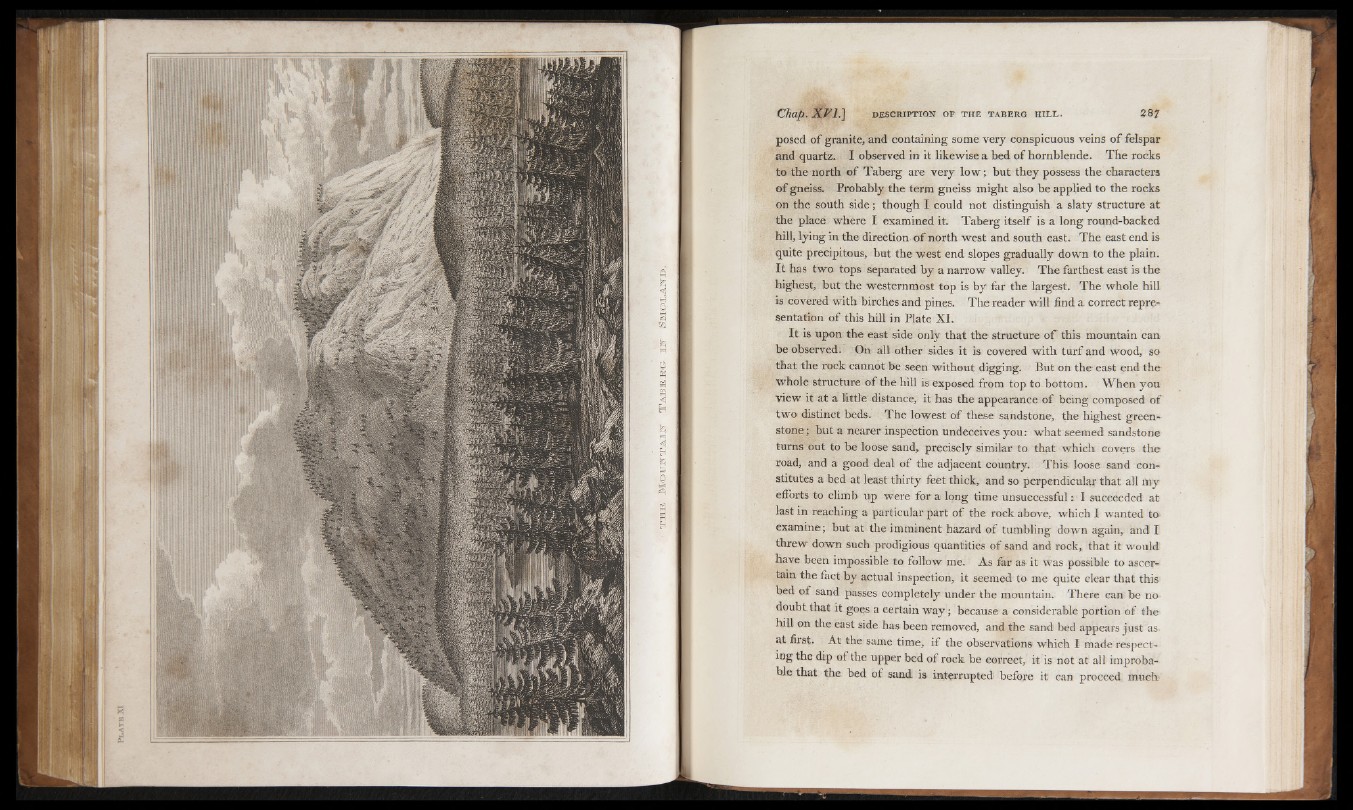
MonTiTXAirr T jomeim?. lír Smo:
posed of granite, and containing some very conspicuous veins o f felspar
and quartz. I observed in it likewise a bed of hornblende. The rocks
to the north o f Taberg are very l ow; but they possess the characters
o f gneiss. Probably the term gneiss might also he applied to the rocks
on the south side; though I could not distinguish a slaty structure at
the place where I examined it. Taherg itself is a long round-backed
hill, lying in the direction o f north west and south east. The east end is
quite precipitous, but the west end slopes gradually down to the plain.
It has two tops separated hy a narrow valley. The farthest east is the
highest, but the westernmost top is by far the largest. The whole hill
is covered with birches and pines. The reader will find a correct representation
o f this hill in Plate XI.
It is upon the east side only that the structure o f this mountain can
be observed. On all other sides it is covered with turf and wood, so
that the rock cannot be seen without digging. But on the east end the
whole structure o f the hill is exposed from top to bottom. When you
view it at a little distance, it has the appearance of being composed of
two distinct beds. The lowest of these sandstone, the highest greenstone
; but a nearer inspection undeceives you: what seemed sandstone
turns out to be loose sand, precisely similar to that which covers the
road, and a good deal o f the adjacent country. This loose sand constitutes
a bed at least thirty feet thick, and so perpendicular that all my
efforts to climb up were for a long time unsuccessful: I succeeded at
last in reaching a particular part o f the rock above, which I wanted to
examine; hut at the imminent hazard of tumbling down again, and I
threw down sueh prodigious quantities of sand and rook, that it would
have been impossible to follow me. As far as it was possible to ascertain
the fact by actual inspection, it seemed to me quite clear that this
bed of sand passes completely under the mountain. There can be no
doubt that it goes a certain w a y ; because a considerable portion o f the
hill on the east side has been removed, and the sand bed appears just as
at first. At the same time, if the observations which I made respecting
the dip of the upper bed o f rock be correct, it is not at all improbable
that the bed of sand; is interrupted before it can proceed much